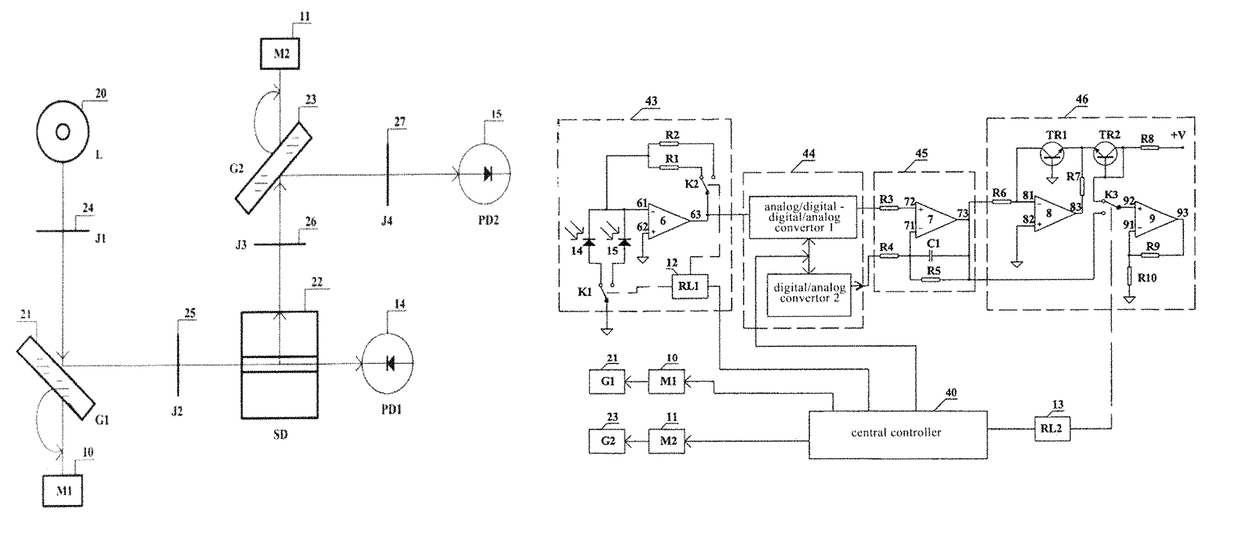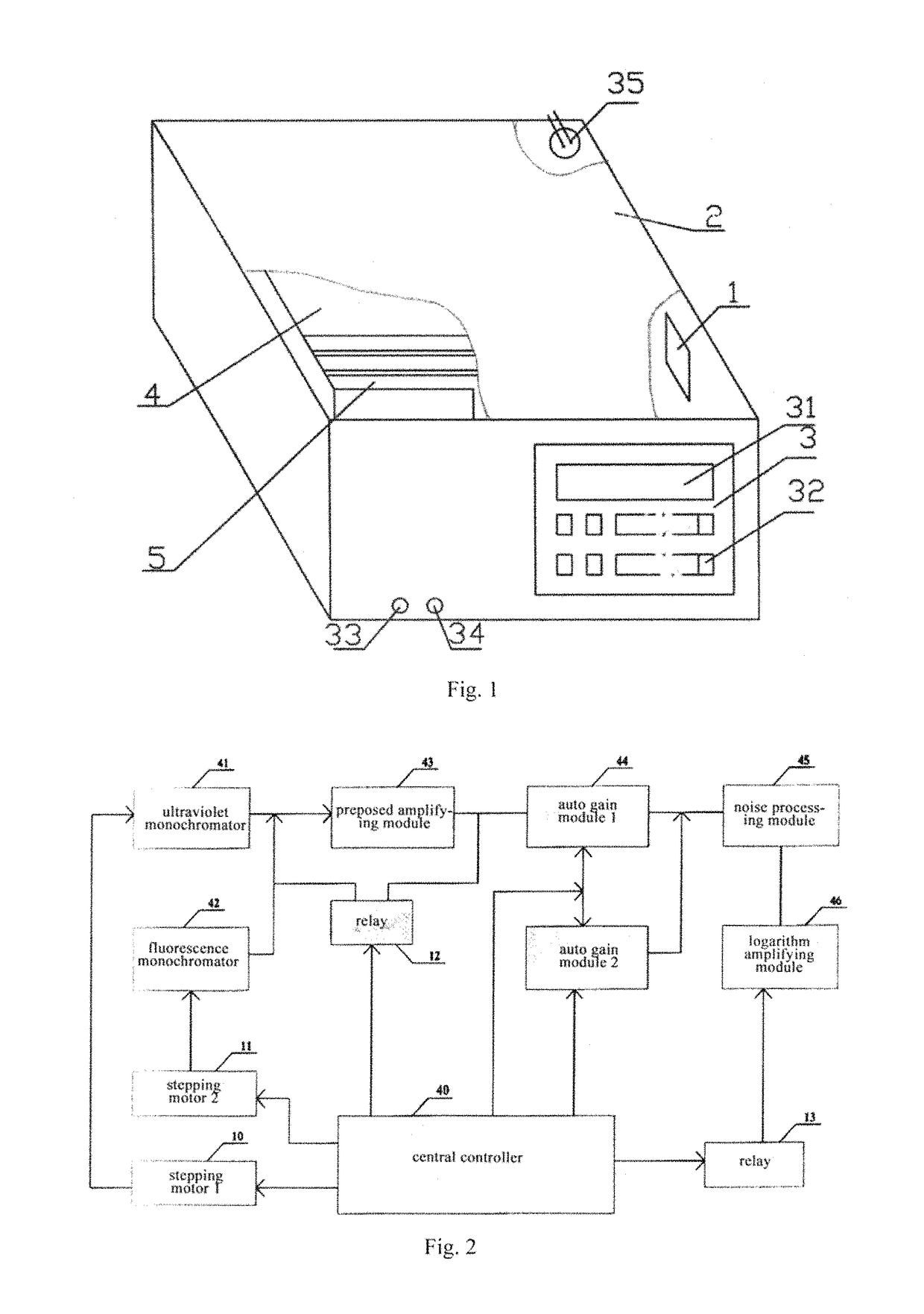Both ultraviolet-visible and double monochromatic fluorescence dual detector for high performance liquid chromatography
a dual detector and liquid chromatography technology, applied in the direction of fluorescence/phosphorescence, instruments, analysis by material excitation, etc., to achieve the effect of reducing the noise of the instrument, and improving the cost performance of the two detectors
- Summary
- Abstract
- Description
- Claims
- Application Information
AI Technical Summary
Benefits of technology
Problems solved by technology
Method used
Image
Examples
embodiment 1
[0064]Ultraviolet-visible detection is applied in the present invention:
[0065]Analysis wavelength: FIG. above: 210 NM, FIG. below: 254 NM
[0066]Detection sample: naphthalene (standard detection sample of ultraviolet detector), calculation result: the minimum detection concentration better than 5 nanogram / ml; Noise: better than 4 micro AU; Drift: better than 40 micro AU / hour
[0067]Detection environment: chromatographic column: C18; mobile phase: 100% methyl alcohol; flow velocity: 1 ml / min
[0068]Chromatogram obtained after the detection is as shown in FIG. 6.
[0069]In brief: main technical targets detected practically: the minimum detection concentration, noise, and drift are 10 times better than the standard. 210 NM wavelength is the worst wavelength interval of sensitivity and stability of all similar products. From the chromatogram, it can be seen that the product can realize the excellent sensitivity and stability in the whole wavelength range after using the innovative art of the pr...
embodiment 2
[0070]Ultraviolet-visible detection is applied in the present invention: Analysis wavelength: 325 NM
[0071]Detection sample: vitamin A (sample that should be detected in the milk according to standards)
[0072]Detection environment: chromatographic column: C18; mobile phase: 100% methyl alcohol; flow velocity: 1 ml / min
[0073]Chromatogram obtained after the detection is as shown in FIG. 7.
[0074]In brief: milk is a daily drink for nutrition, containing vitamin A whose content in the milk cannot be detected easily as existing products have general sensitivity and poor stability.
embodiment 3
[0075]Ultraviolet-visible detection is applied in the present invention:
[0076]Analysis wavelength: 245 NM
[0077]Detection sample: melamine (sample that should be detected in the milk according to standards)
[0078]Detection environment: chromatographic column: C18; mobile phase: 100% methyl alcohol; flow velocity: 1 ml / min
[0079]Chromatogram obtained after the detection is as shown in FIG. 8.
[0080]In brief: melamine is a harmful substance mixed into the milk to improve the false content of protein. Though the detection can be conducted with simple detection test, shapes of chromatographic peak will be a little distorted.
PUM
| Property | Measurement | Unit |
|---|---|---|
| power | aaaaa | aaaaa |
| volume | aaaaa | aaaaa |
| concentration | aaaaa | aaaaa |
Abstract
Description
Claims
Application Information
 Login to View More
Login to View More - R&D
- Intellectual Property
- Life Sciences
- Materials
- Tech Scout
- Unparalleled Data Quality
- Higher Quality Content
- 60% Fewer Hallucinations
Browse by: Latest US Patents, China's latest patents, Technical Efficacy Thesaurus, Application Domain, Technology Topic, Popular Technical Reports.
© 2025 PatSnap. All rights reserved.Legal|Privacy policy|Modern Slavery Act Transparency Statement|Sitemap|About US| Contact US: help@patsnap.com



